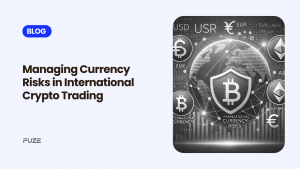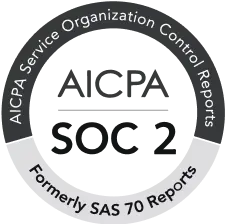The allure of cryptocurrencies for High Net Worth Individuals (HNIs) in the Middle East is undeniable. For Middle Eastern high-net-worth individuals (HNIs) engaging in crypto and over-the-counter (OTC) trading, effectively managing portfolio risk is paramount to safeguarding wealth and ensuring sustainable growth.
This article offers a deep dive into the advanced techniques for managing crypto portfolio risk, offering actionable insights tailored to the unique needs and interests of discerning investors.
Understanding the unique risks of crypto
Before diving into risk management strategies, it’s crucial to understand the inherent risks associated with cryptocurrencies. Unlike stocks or bonds, cryptocurrencies are not backed by any physical assets or central banks. Their value is purely driven by market sentiment, making them susceptible to high volatility. Here are some key risks to consider:
- Market Volatility: Cryptocurrencies can experience dramatic price swings within a short period. A tweet from Elon Musk can send Bitcoin soaring or plummeting, leading to significant potential losses.
- Regulatory Uncertainty: The regulatory landscape surrounding cryptocurrencies is still evolving globally. Governments around the world are still grappling with how to classify and regulate these digital assets. This uncertainty can create a barrier to mainstream adoption and potentially impact prices.
- Security Risks: Cryptocurrency exchanges and wallets can be vulnerable to hacking attacks. With millions of dollars worth of digital assets stored online, robust security measures are crucial.
- Fraud and Scams: The unregulated nature of the crypto space also attracts scammers. Initial Coin Offerings (ICOs) and other investment opportunities can be fraudulent, leading to significant financial losses.
Building a robust crypto portfolio
The first line of defense against crypto risk lies in building a well-diversified portfolio. Unlike simply buying Bitcoin and hoping for the best, a diversified portfolio spreads your risk across different crypto assets. Here are some key strategies to consider:
- Diversification
Diversification is a foundational risk management strategy. By spreading investments across a variety of assets, investors can mitigate the impact of any single asset’s poor performance.
1a. Asset Class Diversification
Investing in a mix of cryptocurrencies (Bitcoin, Ethereum, and altcoins) along with traditional assets (stocks, bonds, and real estate) can reduce overall portfolio risk. The non-correlation between crypto assets and traditional assets often results in a balanced portfolio.
1b. Sector Diversification
Within the crypto space, diversifying across different sectors—such as decentralized finance (DeFi), gaming, and smart contracts—can further minimize risk. For instance, if regulatory changes adversely affect DeFi, investments in other sectors may remain unaffected.
Once you have a diversified portfolio in place, you can further refine your risk management strategy with these advanced techniques:
- Dollar-Cost Averaging (DCA): This strategy involves investing a fixed amount of money into a specific cryptocurrency at regular intervals. This approach helps to average out the cost per unit over time, mitigating the risk of buying at a peak.
- Stop-Loss Orders: Setting stop-loss orders with your crypto exchange allows you to automatically sell your holdings if the price falls below a predetermined level. This can help to limit your losses in a volatile market.
- Take-Profit Orders: Conversely, you can also set take-profit orders to automatically sell your holdings when the price reaches a desired target. This helps to lock in profits and prevent you from holding on to an asset for too long if the market starts to turn.
- Stablecoins for Stability
Stablecoins, such as USDT (Tether), USDC, and DAI, are pegged to stable assets like the US dollar and can provide a haven during periods of high volatility. Allocating a portion of the portfolio to stablecoins can preserve capital and maintain liquidity.
- Hedging with Derivatives
Derivatives, such as futures and options, offer sophisticated ways to hedge against market risk. By entering into contracts that derive their value from underlying crypto assets, investors can protect their portfolios from adverse price movements.
3a. Futures Contracts
Futures contracts obligate the buyer to purchase, and the seller to sell, a specific asset at a predetermined future date and price. For instance, a trader who owns Bitcoin and fears a price drop might sell Bitcoin futures to lock in the current price.
3b. Options Contracts
Options provide the right, but not the obligation, to buy or sell an asset at a set price before a certain date. Protective puts and covered calls are common strategies used to hedge crypto investments.
- Utilizing OTC Trading
For Middle Eastern HNIs considering large-volume crypto transactions, Over-the-Counter (OTC) trading desks offer a compelling alternative to public exchanges. OTC desks cater to institutional investors and high net worth individuals, facilitating large trades without impacting market prices significantly. OTC trades are negotiated directly between the buyer and seller, bypassing the volatility of public exchanges. This can help to mitigate the risk of buying or selling at an unfavorable price due to sudden market movements.
OTC desks often have access to deep pools of liquidity, ensuring that HNWIs can execute large trades efficiently without impacting the overall market price. Reputable OTC desks offer personalized service and can tailor their offerings to meet the specific needs of each investor. This may include customized risk management strategies, hedging solutions, and secure custody services.
- Yield Farming and Staking
Engaging in yield farming and staking allows investors to earn passive income while holding their crypto assets. This not only provides additional returns but also mitigates the impact of price volatility.
5a. Yield Farming
Yield farming involves lending crypto assets through DeFi platforms to earn interest or additional tokens. While it offers high rewards, it’s essential to assess the platform’s reliability and the associated smart contract risks.
5b. Staking
Staking involves locking up crypto assets in a blockchain network to support its operations, earning rewards in return. Staking stablecoins or well-established cryptocurrencies can provide steady returns with lower risk.
- Rebalancing the portfolio
Regularly rebalancing the portfolio ensures that it stays aligned with the investor’s risk tolerance and investment goals. This involves adjusting the proportions of different assets to maintain the desired asset allocation.
Leveraging automated rebalancing tools and bots can simplify the process. These tools continuously monitor the portfolio and make necessary adjustments, ensuring optimal asset distribution without manual intervention.
- Advanced risk management tools
Utilizing advanced risk management tools and analytics platforms can provide deeper insights into portfolio performance and risk exposure.
7a. Value-at-Risk (VaR)
Value-at-Risk is a statistical measure that estimates the potential loss in value of an asset or portfolio over a defined period for a given confidence interval. VaR helps investors understand the maximum potential loss under normal market conditions.
7b. Stress Testing
Stress testing involves simulating extreme market conditions to evaluate how the portfolio would perform under adverse scenarios. This helps in identifying vulnerabilities and making necessary adjustments to mitigate potential losses.
- Using ‘cold wallets’ for enhanced security
Cold wallets are a type of cryptocurrency storage designed to be super secure by keeping your crypto holdings offline. Unlike “hot wallets” that connect to the internet and allow for easy transactions, cold wallets prioritize security by storing your private keys – essential for accessing your crypto – completely disconnected from the internet, and are thus more secure from hacking. Using cold wallets to store a portion of the crypto holdings can provide an additional layer of security and peace of mind.
- Leveraging blockchain analytics
Blockchain analytics tools offer valuable insights into market trends, transaction patterns, and network activity. By analyzing on-chain data, investors can make informed decisions and identify potential risks before they materialize.
Tracking the movements of large holders, or “whales,” can provide early warning signals of significant market shifts. Sudden large transactions by whales can indicate impending volatility, allowing investors to adjust their strategies accordingly.
10. Embracing regulatory compliance
Staying abreast of regulatory developments and ensuring compliance with local and international laws is critical. Regulatory changes can have profound impacts on crypto investments, and being proactive in compliance can prevent legal issues and financial penalties.
Case Study: A Middle Eastern HNI’s Approach to Crypto Risk Management
To illustrate these techniques in practice, consider the case of a hypothetical Middle Eastern HNI, Mr. X, who manages a diversified crypto portfolio worth $50 million.
Diversification Strategy
Mr. X allocates his portfolio as follows:
- 40% in major cryptocurrencies (Bitcoin, Ethereum)
- 20% in promising altcoins (Polkadot, Cardano)
- 20% in stablecoins (USDT, USDC)
- 10% in DeFi projects (Aave, Uniswap)
- 10% in traditional assets (stocks, gold)
Hedging and OTC Trading
To hedge against potential downturns, Mr. X uses Bitcoin futures and options. He also conducts large trades via OTC desks to avoid market impact and maintain confidentiality.
Yield Farming and Staking
Mr. X allocates $5 million to yield farming on trusted DeFi platforms and stakes $3 million in Ethereum 2.0, earning passive income while holding his assets.
Regular Rebalancing and Advanced Tools
He uses automated rebalancing tools to maintain his target asset allocation and employs VaR and stress testing to monitor risk. Blockchain analytics tools help Mr. X track market trends and whale movements, informing his trading decisions.
Insurance and Compliance
Mr. X insures $10 million of his crypto holdings against theft and loss and ensures full compliance with local regulations, safeguarding his investments from legal risks
The role of a trusted partner in building your crypto portfolio
Navigating the complexities of the crypto space can be daunting, especially for HNWIs unfamiliar with the technology and its associated risks. Partnering with a reputable financial advisor specializing in digital assets can be invaluable.
Remember, knowledge is power, and by staying informed about evolving trends and best practices, you can become a more adept crypto investor. At Fuze, our advisors have a deep understanding of the crypto market, a proven track record of success, and a commitment to client education. We can help you develop a comprehensive investment strategy, identify suitable assets, and guide you through the intricacies of risk management. Talk to us today!







